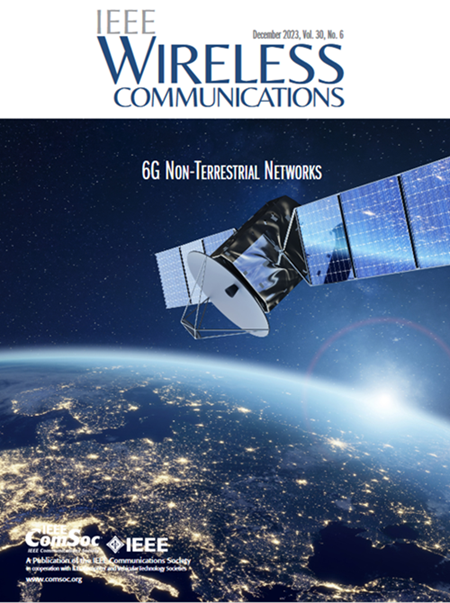面向任务语义通信的智能资源分配研究
IF 10.9
1区 计算机科学
Q1 COMPUTER SCIENCE, HARDWARE & ARCHITECTURE
引用次数: 0
摘要
面向任务的语义通信(TOSC)在减少数据传输量和缓解频谱资源短缺方面具有显著优势。与传统通信不同,语义通信中的资源分配与目标智能任务和特定的交互需求紧密相连。本文研究了一种面向任务的智能资源分配方法。为了进一步提高频谱利用率和能量可持续性,考虑了一种结合能量采集(EH)、认知无线电(CR)和非正交多址(NOMA)的通信网络。本文提出了一种EH-CR-NOMA场景中的语义感知资源分配方案,其中采用体验质量(QoE)作为评估指标。为了实现语义信息更丰富的数据对资源的优先占用,提出了语义通信用户的发射功率、时隙划分因子和语义压缩比的联合优化问题。以最大化TOSC的长期QoE为目标,设计了一个双层深度强化学习框架来解决语义感知资源分配问题。通过在语义速率和语义保真度之间进行权衡,该方案可以更好地满足用户意图。本文章由计算机程序翻译,如有差异,请以英文原文为准。
Toward Intelligent Resource Allocation on Task-Oriented Semantic Communication
Task-oriented semantic communication (TOSC) has significant advantages in reducing the amount of data transmission and alleviating the scarcity of spectrum resources. Unlike traditional communication, the resource allocation in semantic communication is tightly linked to target intelligent tasks and specific interaction requirements. In this article, the intelligent resource allocation in a task-oriented manner is investigated. To further improve spectrum utilization and energy sustainability, a communication network combining energy harvesting (EH), cognitive radio (CR), and non-orthogonal multiple access (NOMA) is considered. This article proposes a semantic-aware resource allocation scheme in the EH-CR-NOMA scenario, where the quality of experience (QoE) is adopted as the evaluation metric. To achieve the preferential occupation of resources by data with richer semantic information, a joint optimization problem of the transmit power, time slot division factor, and semantic compression ratio of the semantic communication user is formulated. With the goal of maximizing the long-term QoE of TOSC, a two-tier deep reinforcement learning framework is designed to solve the semantic-aware resource allocation problem. By striking a trade-off between semantic rate and semantic fidelity, the proposed scheme can better satisfy user intentions.
求助全文
通过发布文献求助,成功后即可免费获取论文全文。
去求助
来源期刊

IEEE Wireless Communications
工程技术-电信学
CiteScore
24.20
自引率
1.60%
发文量
183
审稿时长
6-12 weeks
期刊介绍:
IEEE Wireless Communications is tailored for professionals within the communications and networking communities. It addresses technical and policy issues associated with personalized, location-independent communications across various media and protocol layers. Encompassing both wired and wireless communications, the magazine explores the intersection of computing, the mobility of individuals, communicating devices, and personalized services.
Every issue of this interdisciplinary publication presents high-quality articles delving into the revolutionary technological advances in personal, location-independent communications, and computing. IEEE Wireless Communications provides an insightful platform for individuals engaged in these dynamic fields, offering in-depth coverage of significant developments in the realm of communication technology.
 求助内容:
求助内容: 应助结果提醒方式:
应助结果提醒方式:


